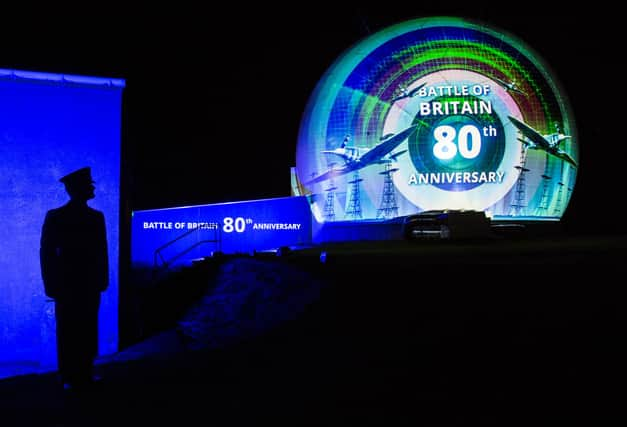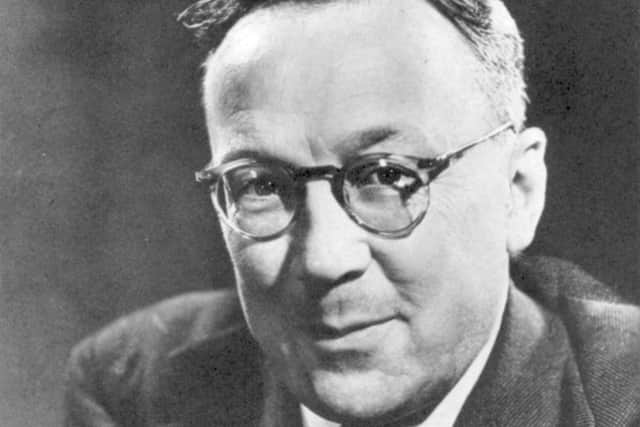Battle of Britain: Remembering the Scots who helped defeat the Luftwaffe


The anniversary of the 1940 Battle of Britain is being commemorated in the north of Scotland, with RAF Buchan illuminated in honour of “the fighting few” who crushed Hitler’s large-scale air attack as well as the thousands of other men and women who supported the campaign on the ground.
Also remembered is the Scot, Sir Robert Watson-Watt, a radar pioneer who developed the Chain Home system of defence.
Advertisement
Hide AdAdvertisement
Hide AdThe ring of coastal early warning radar stations was the first of its kind in the world and is credited with securing success in eliminating the Luftwaffe from British airspace.


Chris Elliot, chief executive of the RAF Benevolent Fund said: “Sir Robert Watson-Watt brought all the elements of radar into one practical system.
He was able to develop a system that helped win the Battle of Britain, and without it I don’t think we would have had the same success.”
Born in Brechin, Angus, Sir Robert, the son of a carpenter, was hired by Air Ministry to advance air defences after Nazi Germany claimed to possess a ‘death ray’ which could destroy British targets using radio waves.
Sir Robert was asked to develop a response that could destroy German aircraft before they attacked although he believed he could develop a machine able to detect an aircraft in flight before it was visible.
He called it RADAR - Radio Detection and Ranging - as it used radio waves.
The Battle of Britain took place between July and October 1940 with September 15 named as Battle of Britain Day given it was when the British Royal Air Force (RAF) gained a decisive victory over the Luftwaffe in what was Nazi Germany’s largest daylight attack.
Some 1,120 Luftwaffe aircraft were sent to attack London but were repelled by just 630 RAF fighters and two days later Hitler postponed his plans to invade Britain.
Advertisement
Hide AdAdvertisement
Hide AdA total of 544 RAF aviators and 312 RAF ground personnel lost their lives during the battle and the airmen became known as “The Few” following a tribute by then prime minister
Winston Churchill, who said: “Never in the field of human conflict was so much owed by so many to so few”.
Only one member of The Few, John Hemingway, is still alive today, aged 101.
The RAF Buchan ributed features archive footage to “bring to life” the stories of those who served on the ground during the Battle of Britain.
Ms Elliot said: “Bringing attention to those men and women, and particularly women, who served during the Battle of Britain, is importat to us for us this year.
"The women who served at the RAF airfields were doing it under fire. Those airfields were being bombed by the Luftwaffe on a daily basis sometimes.”
Two Scottish-based fighter squadrons took part in the Battle of Britain - 603 City of Edinburgh - which trained in Montrose - and 602 City of Glasgow, which was based in Drem, East Lothian.
When 603 left Montrose to take part in the campaign, pilots flying through Glen Esk looked down to see the words ‘Good Luck’ spelled out in white rocks on the ground with the message left by local schoolchildren.
A message from the Editor:Thank you for reading this story on our website. While I have your attention, I also have an important request to make of you.With the coronavirus lockdown having a major impact on many of our advertisers - and consequently the revenue we receive - we are more reliant than ever on you taking out a digital subscription.Subscribe to scotsman.com and enjoy unlimited access to Scottish news and information online and on our app. With a digital subscription, you can read more than 5 articles, see fewer ads, enjoy faster load times, and get access to exclusive newsletters and content. Visit https://www.scotsman.com/subscriptions now to sign up.
Our journalism costs money and we rely on advertising, print and digital revenues to help to support them. By supporting us, we are able to support you in providing trusted, fact-checked content for this website.
Joy Yates
Editorial Director
Comments
Want to join the conversation? Please or to comment on this article.